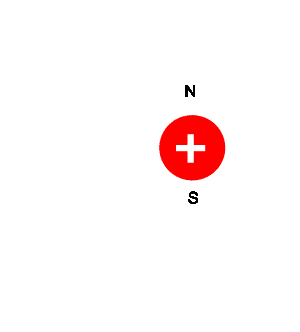Generating a spectrum

The two spin states, one aligned with the external field and one that is against it, differ in energy. The difference in energy of the two spin states depends on the strength of the external magnetic field applied, as shown on the right.
However, the applied external magnetic field experienced by all nuclei is not the same. The magnetic field experienced by a nucleus is influenced by a phenomenon called nuclear shielding. Electrons found around each nucleus are also spinning thus creating their own magnetic field which tends to shield the nucleus from the external magnetic field. This nuclear shielding is therefore dependant on the chemical environment a nucleus finds itself in. This will be discussed in more detail later.

The difference in energy between the two spin states is small and lies in the radio region of the electromagnetic spectrum. A nucleon can absorb a packet of energy (quantum) in the radio region and be promoted to the higher energy spin state. Once there it quickly relaxes to its original state by releasing the same energy, radio frequency, as it originally absorbed.
The animation on the right shows the absorption of a radio frequency by a nucleon and its eventual release.
So if we bombard a number of nuclei that are held in a strong magnetic field with radio waves we, can measure the amount of a particular radio frequency that is absorbed. From this data we can construct the nmr spectrum for this set of nuclei.
